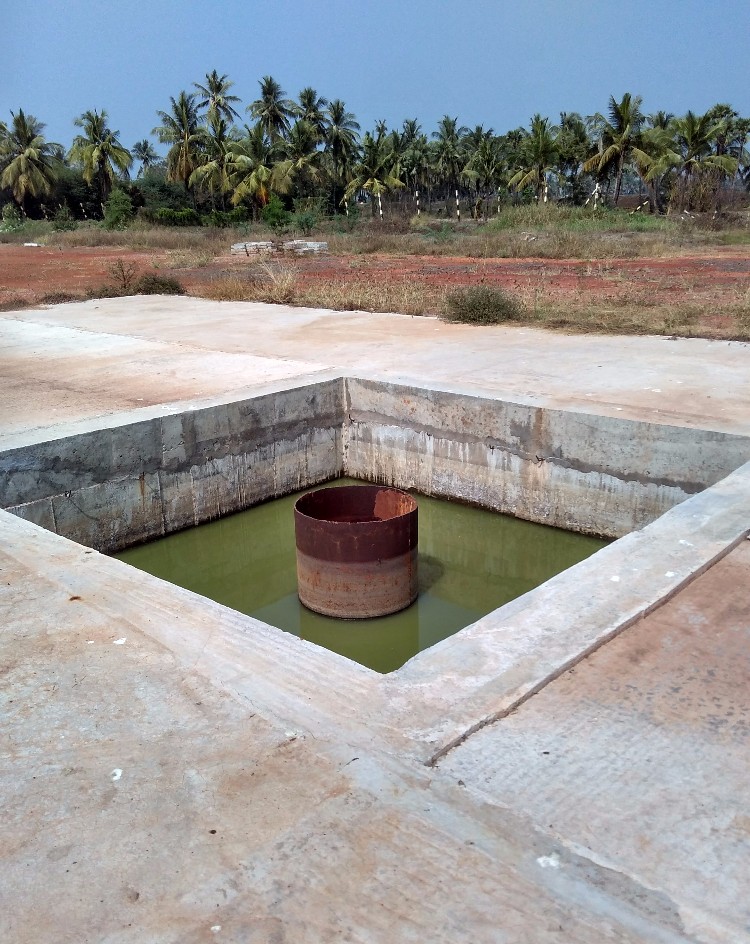Shale Gas: Look Before You Leap

By Rahul Maganti
The Oil and Natural Gas Corporation (ONGC) is exploring the possibilities of extracting shale gas from the Krishna Godavari Delta and it has chosen five sites in the region for setting up exploratory wells. While three of them are in West and East Godavari districts, the rest lie in Krishna District. This comes at a time when the Ministry of Petroleum and Natural Gas has come up with a policy brief about Shale Gas, in a bid to meet the supply – demand gap of energy and thereby avert an ‘impending crisis’.
ONGC has taken 7.5 acres of agricultural land for lease in Komallapudi village of Kruthivennu mandal and 7 acres of land in Modugumudi of Putlacheruvu Panchayat in Mandavalli mandal. A public hearing, for both the wells, was held in ZP High School, Mandavalli which was presided over by Sub Collector G Chandrudu and Narayana, Environmental Engineer of the Krishna district PCB. However, the EIA notification of 2006 and a Supreme Court order specify that the public hearing should be held within less than kilometer from the project site. The place of public hearing in this case is 11.1 kms (Modugumudi) away from one well and 39 kms (Komallapudi) from another. Not surprisingly, the recorded minutes of the public hearing, on whose basis the Ministry of Environment and Forests (MoEF) will give Environmental Clearance (EC) for the projects, does not have anyone from Komallapudi.

Shale Gas extraction involves sending huge amount of water coupled with chemicals and sand to depths of up to 4000 meters under high pressure. This process is called Hydro Fracking or Fracking. The high pressure creates fissures in the rocks and releases the trapped shale gas from the rock formations. For Krishna Godavari Basin, which already has a recorded evidence of land subsidence due to the existing 65 hydrocarbon fields in the region, the exploration of shale gas is only making the environmental disaster even more acute.
“Around 80 per cent of the mixture remains underground and the remaining 20 per cent rises to the surface which is not disposed off safely,” says retired professor and geologist Krishna Rao, who was part of field surveys and studies recording the land subsidence in the region. Environmentalists, including Rao, claim that many different chemical products, some of which are toxic, are injected, along with several million gallons of fresh water, into each of the wells.
Fracking was first tried in the United States in the 1940’s. From being an importer of Liquid Natural Gas, United States is now self-sufficient and is even planning to export. However, this has come with a significant environmental cost. Experience from US has taught that the leakage of the toxic chemicals has contaminated aquifers, which are the sources of drinking water. Fracking has been banned by many countries in Europe and also by many states in the United States, owing to proven scientific studies and records of pollution of air, water and other community resources in the vicinity.

A policy brief by New Delhi-based The Energy and Resources Institute (TERI) titled ‘Shale Gas in India: Look before you leap’ raises a red flag about the huge amounts of clean water necessary in the production of shale gas in a water stressed country like India. It further says that India is already approaching water scarcity conditions and it would not be wise to go ahead with the idea of Shale gas in such conditions. “Each well requires 17 million litres of water on an average to perform the experiment once. This region is already stressed for water, both for irrigation as well as for domestic use. Where will ONGC get so much of water from?” asks RCP Reddy of the CPI(M).
“Our lands are in the tail end and we hardly have any access to irrigation water. Since the ONGC people are paying 40,000 INR per acre, farmers gave away their lands on lease to them. No one has listened to me when I spoke about environmental degradation and health effects such a well would cause in the future,” says 28 year old Tataji of Komallapudi who works in Hyderabad as a software professional. When this reporter asked the villagers if the officials had provided them with the Environmental Impact Assessment (EIA) Report, the villagers replied in the negative.
“Our lands were taken away in early 2015 and the construction of the wells started in April 2015. It was only in November 2016, an year-and-a-half after the construction of the well was started, that someone came to us and asked us is it is okay to have the well in our village,” says Varadaiah, a resident of Modugumudi. Varadaiah was referring to the illegal construction of the well that took place even before proper permissions were in place.
The villagers were offered a lease amount of 53000 INR per acre in Modugumudi, as these are three-crops-an-year lands. The project site is right behind the drinking water pond of the village. “All due rules and regulations that need to be adhered to in the granting of EC have been bypassed because once people come to know about how dangerous this project is for their livelihood, environment and health, they are going to oppose it,” says VS Krishna of the Human Rights Forum.





